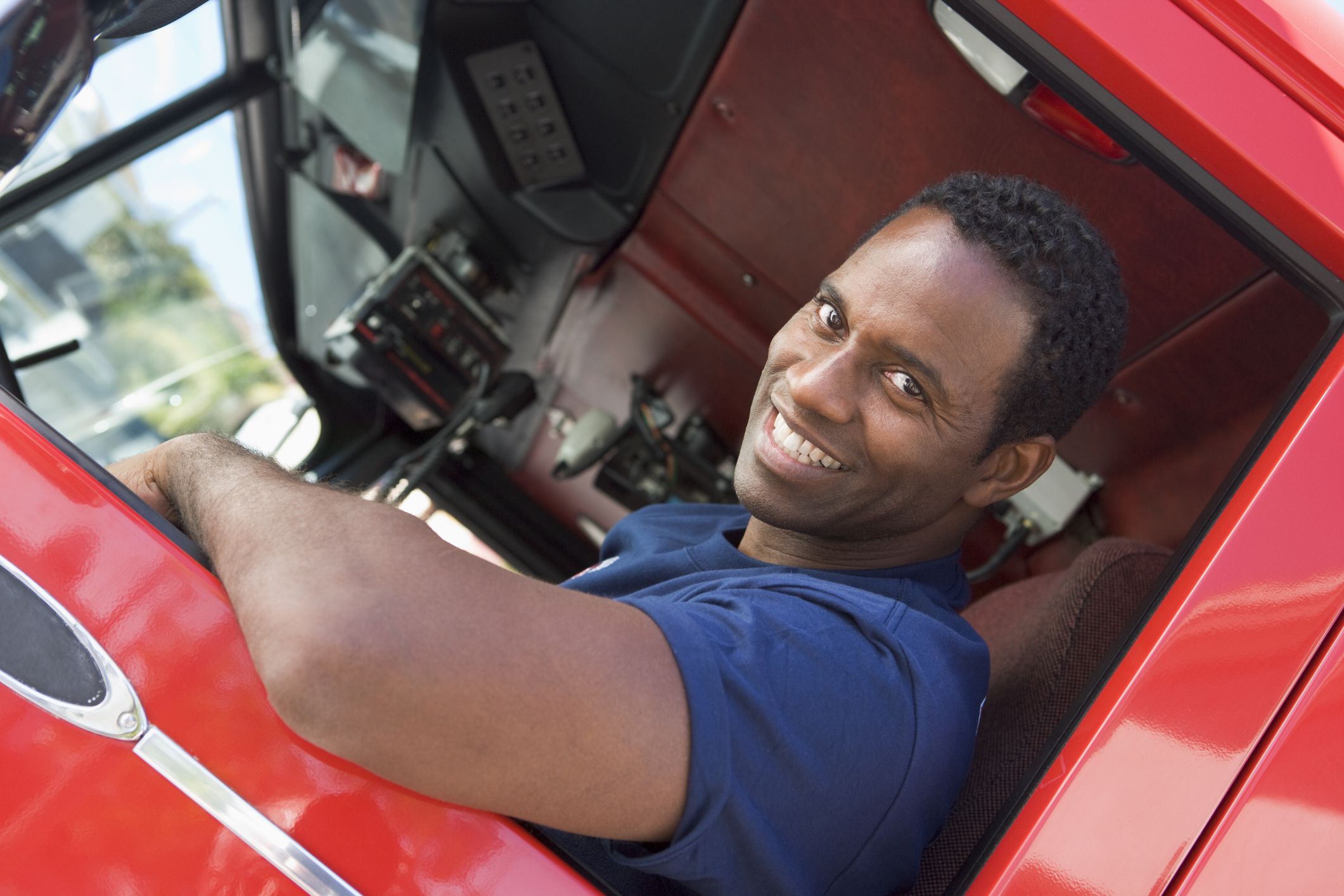Occupational Assessment (CPAT)

The CPAT is a sequence of events requiring you to progress along a predetermined path from event to event in a continuous manner.
-
“Hi Fern, Thank you for the opportunity to do the orientation today. Kudos to the staff at the facility that I attended. They were attentive and deeply knowledgeable regarding the tasks that we were to complete there.”
Candidate Physical Ability Test Overview:
This candidate physical ability test (CPAT) consists of eight separate events. The CPAT is a sequence of events requiring you to progress along a predetermined path from event to event in a continuous manner. This test was developed to allow fire departments to obtain pools of trainable candidates who are physically able to perform essential job tasks at fire scenes.Practical Orientation:
The practical orientation gives candidates the opportunity to physically attempt all of the 8 events and receive hands-on feedback from our experienced proctors. This allows candidates to identify and strengthen any weaknesses within the CPAT course.
CPAT Orientation sessions will be regularly offered to familiarize candidates with the course. Sessions are offered during any open testing weekend and can be arranged by any department or individual candidates. The cost of the practical orientation is $120 and upon successful completion, the candidate will NOT receive a CPAT certification. Please email us to reserve a CPAT Orientation.

Virtual Orientation:
Firefighter Services of Ontario has designed an online virtual orientation of the CPAT test. The purpose of this orientation is to introduce candidates to the CPAT test and help them to better prepare for their test date. Candidates are strongly encouraged to thoroughly review the information contained in this virtual orientation. It is recommended that you take the practical orientation (cost of $120) or virtual orientation prior to your test date so you can physically prepare and become familiar with the CPAT course. Please contact us if you wish to register for the practical orientation.
Ultimately, it is the responsibility of the candidate to prepare themselves for the CPAT by reviewing the protocols and orientating themselves with the course via the virtual or practical orientation, or both.
CPAT is a pass/fail test based on a validated maximum total time of 10 minutes and 20 seconds. A failure will be given if any of the events are not completed correctly, or 10 minutes and 20 seconds is exceeded before the test is completed.
All props were designed to obtain the necessary information regarding your physical ability. The tools and equipment were chosen to provide the highest level of consistency, safety and validity in measuring your physical abilities. The events and distances between events are standardized.
The events are placed in a sequence that best simulates fire scene events while allowing an 85-foot (25.91-m) walk between events. To ensure the highest level of safety and to prevent exhaustion, no running is allowed between events. This walk allows you approximately 20 seconds to recover and regroup before each event.
To ensure scoring accuracy by eliminating timer failure, two stopwatches are used to time the CPAT. One stopwatch is designated as the official test time stopwatch, the second is the backup stopwatch. If mechanical failure occurs, the time on the backup stopwatch is used. The stopwatches are set to the pass/fail time and count down from 10 minutes and 20 seconds. If time elapses prior to the completion of the test, the test is concluded and you fail the test.
Scroll down and click the tabs to learn more about each of the 8 events.
Proper Test Attire:
In these events, you wear a 50-pound (22.68-kg) vest to simulate the weight of self-contained breathing apparatus (SCBA) and fire fighter protective clothing. An additional 25 pounds (11.34 kg), using two 12.5-pound (5.67-kg) weights that simulate a high-rise pack (hose bundle), is added to your shoulders for the stair climb event.
Throughout all events, you must wear long pants, a hard hat with chin strap, work gloves and footwear with no open heel or toe. Watches and loose or restrictive jewelry are not permitted. The weights, hard hat, and work gloves will be provided.
Fitness and Preparation:
You can use the above Physical Preparation points in the guide below to prepare yourself for the CPAT As your fitness improves you should begin to link the various test components. For example, immediately upon finishing the stair climb move directly to the hose drag and then to the equipment carry. Eventually you will be able to simulate all of the task components in the CPAT in a continuous exercise sequence.
These exercises, however, are only designed to assist you with the CPAT. The job of a fire fighter is one of the most physically demanding jobs in North America. There are fitness routines necessary to prepare individuals for careers in the fire service, and it is important to maintain a healthy lifestyle and a consistent fitness routine.
- Stair Climb
- Hose Drag
- Equipment Carry
- Ladder Raise & Extension
- Forcible Entry
- Search
- Rescue
- Ceiling Breach & Pull

Event #1
Equipment
This event uses a step treadmill stair climbing machine. The machine is positioned with one side up against a wall and an elevated proctor platform on the side opposite the wall. A single handrail on the wall side is available for you to grasp while mounting and dismounting the step treadmill.
Purpose of Evaluation
This event is designed to simulate the critical tasks of climbing stairs in full protective clothing while carrying a high-rise pack (hose bundle) and climbing stairs in full protective clothing carrying fire fighter equipment. This event challenges your aerobic capacity, lower body muscular endurance and ability to balance. This event affects your aerobic energy system as well as the following muscle groups: quadriceps, hamstrings, glutes, calves, and lower back stabilizers.
Event
For this event, you must wear two 12.5-pound (5.67-kg) weights on your shoulders to simulate the weight of a high-rise pack. Prior to the initiation of the timed CPAT, there is a 20-second warm-up on the StepMill at a set stepping rate of 50 steps per minute. During this warm-up period, you are permitted to dismount, grasp the rail or hold the wall to establish balance and cadence. If you fall or dismount the StepMill during the 20-second warm-up period, you must remount the StepMill and restart the entire 20-second warm-up period.
You are allowed to restart the warm-up period twice. The timing of the test begins at the end of this warm-up period when the proctor who calls the word “START”. There is no break in time between the warm-up period and the actual timing of the test. For the test, you must walk on the StepMill at a set stepping rate of 60 steps per minute for 3 minutes. This concludes the event. The two 12.5-pound (5.67-kg) weights are removed from your shoulders. Walk 85 feet (25.91 m) within the established walkway to the next event.
Warnings and Failures
If you fall or dismount the StepMill three times during the warm-up period, you fail the test. If you fall, grasp any of the test equipment or dismount the StepMill after the timed CPAT begins, the test is concluded and you fail the test. During the test, you are permitted to touch the wall or handrail for balance only momentarily. However, if the wall or handrail is grasped or touched for an extended period of time, or if the wall or handrail is used for weight bearing, you are warned.
Only two warnings are given. The third infraction constitutes a failure, the test time is concluded and you fail the test.
Physical Preparation
You can readily modify aerobic training to more closely resemble the 3-minute stair climb in the CPAT by performing actual stair-stepping exercise on any conveniently located first step of a staircase, preferably at least 8 inches in height. Step at a rate that permits completion of 24 complete stepping cycles within a one-minute period. A stepping cycle consists of stepping up with one foot, then the other and down with one foot, then the other in a rhythm “up-up, down-down”. You must alternate starting foot from right to left. Strive to complete two stepping cycles within a 5-second period.
Begin training by stepping continuously (unweighted) for 5 minutes. As your fitness improves, complete a second and then third 5 minute exercise bout interspersed with several minutes of recovery. Once you can complete three intervals of 5-minutes of stepping, add weight to your torso in the form of a knapsack to which weights, sand, dirt or rocks has been added. Continue to perform three 5-minute intervals of stepping; progressively add weight to the knapsack as your fitness improves so that you can step with 50 pounds of additional weight. (This 50-pound knapsack and work gloves should be worn in training for all subsequent events of the CPAT.)
In addition, carry 10-15 pounds (dumbbell, sand filled plastic container) in each hand while stepping. The total weight carried (knapsack plus hand-held weights) should equal approximately 75 pounds. At this stage, reduce the duration of the exercise interval to 3 minutes. This task-specific training not only improves aerobic fitness for continuous stepping but it also improves your leg power for stepping in the weighted condition, which represents a unique component of this CPAT item.

Event #2
Equipment
This event uses an uncharged fire hose with a hoseline nozzle. The hoseline is marked at 8 feet (2.24 m) past the coupling at the nozzle to indicate the maximum amount of hose you are permitted to drape across your shoulder or chest. The hoseline is also marked at 50 feet (15.24 m) past the coupling at the nozzle to indicate the amount of hoseline that you must pull into a marked boundary box before completing the test.
Purpose of Evaluation
This event is designed to simulate the critical tasks of dragging an uncharged hoseline from the fire apparatus to the fire occupancy and pulling an uncharged hoseline around obstacles while remaining stationary. This event challenges your aerobic capacity, lower body muscular strength and endurance, upper back muscular strength and endurance, grip strength and endurance, and anaerobic endurance.
This event affects your aerobic and anaerobic energy systems as well as the following muscle groups: quadriceps, hamstrings, glutes, calves, lower back stabilizers, biceps, deltoids, upper back, and muscles of the forearm and hand (grip).
Event
For this event, you must grasp a hoseline nozzle attached to 200 feet (60 m) of 1 3/4-inch (44-mm) hose. Place the hoseline over your shoulder or across your chest, not exceeding the 8-foot (2.24-m) mark. You are permitted to run during the hose drag. Drag the hose 75 feet (22.86 m) to a pre-positioned drum, make a 90° turn around the drum, and continue an additional 25 feet (7.62 m).
Stop within the marked 5 foot x 7 foot (1.52 m x 2.13 m) box, drop to at least one knee and pull the hoseline until the hoseline’s 50-foot (15.24-m) mark crosses the finish line. During the hose pull, you must keep at least one knee in contact with the ground and knee(s) must remain within the marked boundary lines. This concludes the event. Walk 85 feet (25.91 m) within the established walkway to the next event.
Warnings and Failures
During the hose drag, if you fail to go around the drum or go outside of the marked path (cones), the test time is concluded and you fail the test. During the hose pull, you are warned if at least one knee is not kept in contact with the ground. The second infraction constitutes a failure, the test time is concluded and you fail the test.
During hose pull, you are warned if your knees go outside the marked boundary line. The second infraction constitutes a failure, the test time is concluded and you fail the test.
Physical Preparation
Attach 50 feet of rope to a duffel bag to which weight has been added. Tires or cement blocks can also be used for resistance. Choose an initial resistance that enables you to perform 8 to 10 repetitions (2-minute recovery between repetitions) of the exercise sequence. This generally represents an effort that you would rate as feeling “somewhat hard.”
Progressively increase the resistance to 60 to 80 pounds as fitness improves. Place the rope over your shoulder and drag the resistance a distance of 75 feet. (You should run during this phase of the event.) Immediately drop to one knee and steadily and briskly pull the rope hand-over-hand to bring the resistance into your body. A parking lot, school yard, driveway, or sidewalk can be used for training on this event.

Event #3
Equipment
This event uses two saws and a tool cabinet replicating a storage cabinet on a fire truck.
Purpose of Evaluation
This event is designed to simulate the critical tasks of removing power tools from a fire apparatus, carrying them to the emergency scene and returning the equipment to the fire apparatus. This event challenges your aerobic capacity, upper body muscular strength and endurance, lower body muscular endurance, grip endurance, and balance.
This event affects your aerobic energy system as well as the following muscle groups: biceps, deltoids, upper back, trapezius, muscles of the forearm and hand (grip), glutes, quadriceps, and hamstrings.
Event
For this event, you must remove the two saws from the tool cabinet, one at a time, and place them on the ground. Pick up both saws, one in each hand, and carry them while walking 75 feet (22.86 m) around the drum, then back to the starting point. You are permitted to place the saw(s) on the ground and adjust your grip.
Upon return to the tool cabinet, place the saws on the ground, pick up each saw one at a time, and replace the saw in the designated space in the cabinet. This concludes the event. Walk 85 feet (25.91 m) within the established walkway to the next event.
Warnings and Failures
If you drop either saw on the ground during the carry, the test time is concluded and you fail the test. You receive one warning for running. The second infraction constitutes a failure, the test time is concluded and you fail the test.
Physical Preparation
Use two dumbbells or plastic containers filled with sand so that each weighs approximately 30 pounds. Place the weights on a shelf four feet above ground level. Remove the weights, one at a time, and place them on the ground.
Then pick up the weights and carry them a distance of 40 feet out and 40 feet back and replace them on the shelf. If the initial weight feels too heavy, choose a lighter weight for your initial practice. Continue to practice this test item until it can be performed with 30 pounds with relative ease.

Event #4
Equipment
This event uses two 24-foot (7.32-m) fire department ladders. For your safety, a retractable lanyard is attached to the ladder that you raise.
Purpose of Evaluation
This event is designed to simulate the critical tasks of placing a ground ladder at a fire structure and extending the ladder to the roof or window. This event challenges your aerobic capacity, upper body muscular strength, lower body muscular strength, balance, grip strength, and anaerobic endurance.
This event affects your aerobic and anaerobic energy systems as well as the following muscle groups: biceps, deltoids, upper back, trapezius, muscles of the forearm and hand (grip), glutes, quadriceps, and hamstrings.
Event
For this event, you must walk to the top rung of the 24-foot (7.32-m) aluminum extension ladder, lift the unhinged end from the ground, and walk it up until it is stationary against the wall. This must be done in a hand over hand fashion, using each rung until the ladder is stationary against the wall. You must not use the ladder rails to raise the ladder.
Immediately proceed to the pre-positioned and secured 24-foot (7.32-m) aluminum extension ladder, stand with both feet within the marked box of 36 inches x 36 inches (91.44 cm x 91.44 cm), and extend the fly section hand over hand until it hits the stop. Then, lower the fly section hand over hand in a controlled fashion to the starting position. This concludes the event. Walk 85 feet (25.91 m) within the established walkway to the next event.
Warnings and Failures
If you miss any rung during the raise, one warning is given. The second infraction constitutes a failure, the test time is concluded and you fail the test. If you allow the ladder to fall to the ground or the safety lanyard is activated because you released your grip on the ladder, the test time is concluded and you fail the test.
If during the ladder extension, your feet do not remain within marked boundary lines, one warning is given. The second infraction constitutes a failure, the test time is concluded and you fail the test. If you do not maintain control of the ladder in a hand over hand manner, or let the rope halyard slip in an uncontrolled manner, your test time is concluded and you fail the test.
Physical Preparation
Ladder Raise: The ideal training for this task requires an actual 12-foot aluminum extension ladder. If this size ladder is unavailable, you can use a single ladder or smaller extension ladder to practice the skill required raising the ladder. Practice of the ladder raise sequence requires the assistance of two adults to “foot” the ladder at its base to prevent it from sliding forward and/or falling during the raise.
In practicing this component (as described in the test directions) it is important to initially move slowly so as to develop the skill and confidence to safely complete the required movements. Be sure to use each rung when raising the ladder to develop the coordination and timing necessary on the CPAT.
Ladder Extension: Task-specific training of the muscles required in the ladder extension can be provided by attaching a rope to a weighted duffel bag or knapsack. Place the rope over a tree branch (or horizontal bar support above a row of playground swings) eight to ten feet above the ground. With hand-over-hand movements steadily raise the bag to the top of the branch or bar and then slowly lower it to the ground.
Start with a weight that you would rate as feeling “somewhat hard,” and perform eight to ten repetitions of the movement. Rest two minutes and repeat the exercise-rest sequence two more times. As your strength improves progressively add more resistance until you can exercise with 40 to 50 pounds of weight.

Event #5
Equipment
This event uses a mechanized device located 39 inches (1 m) off the ground that measures cumulative force and a 10-pound (4.54-kg) sledgehammer.
Purpose of Evaluation
This event is designed to simulate the critical tasks of using force to open a locked door or to breach a wall. This event challenges your aerobic capacity, upper body muscular strength and endurance, lower body muscular strength and endurance, balance, grip strength and endurance, and anaerobic endurance.
This event affects your aerobic and anaerobic energy systems as well as the following muscle groups: quadriceps, glutes, triceps, upper back, trapezius, and muscles of the forearm and hand (grip).
Event
For this event, you must use a 10-pound (4.54-kg) sledgehammer to strike the measuring device in the target area until the buzzer is activated. During this event, you must keep your feet outside the toe-box at all times. After the buzzer is activated, place the sledgehammer on the ground. This concludes the event. Walk 85 feet (25.91 m) within the established walkway to the next event.
Warnings and Failures
If you do not maintain control of the sledgehammer and release it from both hands while swinging, it constitutes a failure, the test time is concluded and you fail the test. If you step inside the toe-box, one warning is given. The second infraction constitutes a failure, the test time is concluded and you fail the test.
Physical Preparation
Borrow or purchase a ten-pound sledgehammer. Wrap padding around a large tree or vertical pole at a level of 39 inches above the ground with a circular target in the center. Stand sideways and swing the sledgehammer in a level manner so the head strikes the center of the target area. Focus on using your legs and hips to initiate the swinging motion.
The initial phase of this task-specific training should focus on learning the coordinated movement of your arms and legs to accurately hit the target. Repeat the swing 15 times and rest for two minutes. Repeat this exercise-rest sequence twice again. Strive to increase the velocity (power) of each swing without sacrificing accuracy as your comfort level and skill on this test item improve.

Event #6
Equipment
This event uses an enclosed search maze that has obstacles and narrowed spaces.
Purpose of Evaluation
This event is designed to simulate the critical task of searching for a fire victim with limited visibility in an unpredictable area. This event challenges your aerobic capacity, upper body muscular strength and endurance, agility, balance, anaerobic endurance, and kinesthetic awareness.
This event affects your aerobic and anaerobic energy systems as well as the following muscle groups: muscles of the chest, shoulder, triceps, quadriceps, abdominals, and lower back.
Event
For this event, you must crawl through a tunnel maze that is approximately 3 feet (91.44 cm) high, 4 feet (121.92 cm) wide and 64 feet (19.51 m) in length with two 90° turns. At a number of locations in the tunnel, you must navigate around, over and under obstacles. In addition, at two locations, you must crawl through a narrowed space where the dimensions of the tunnel are reduced.
Your movement is monitored through the maze. If for any reason, you choose to end the event, call out or rap sharply on the wall or ceiling and you will be assisted out of the maze. Upon exit from the maze, the event is concluded. Walk 85 feet (25.91 m) within the established walkway to the next event.
Warnings and Failures
A request for assistance that requires the opening of the escape hatch or opening of the entrance/exit covers constitutes a failure, the test time is concluded and you fail the test.
Physical Preparation
Practice crawling on hands and knees (wearing sweat pants and/or kneepads) at least 70 feet while making several right angle turns during the crawl. For the major portion of the crawl keep low enough so as not to contact an object three feet above the ground. Periodically, drop your stomach and crawl ten feet along the ground. Once you are comfortable crawling as above repeat the sequence with a knapsack on. Gradually increase the weight within the knapsack until it equals 50 pounds.

Event #7
Equipment
This event uses a weighted mannequin equipped with a harness with shoulder handles.
Purpose of Evaluation
This event is designed to simulate the critical task of removing a victim or injured partner from a fire scene. This event challenges your aerobic capacity, upper and lower body muscular strength and endurance, grip strength and endurance, and anaerobic endurance. This event affects your aerobic and anaerobic energy systems as well as the following muscle groups: quadriceps, hamstrings, glutes, abdominals, torso rotators, lower back stabilizers, trapezius, deltoids, latissimus dorsi, biceps, and muscles of the forearm and hand (grip).
Event
For this event, you must grasp a 165-pound (74.84-kg) mannequin by the handle(s) on the shoulder(s) of the harness (either one or both handles are permitted), drag it 35 feet (10.67 m) to a pre-positioned drum, make a 180° turn around the drum, and continue an additional 35 feet (10.67 m) to the finish line. You are not permitted to grasp or rest on the drum. It is permissible for the mannequin to touch the drum. You are permitted to drop and release the mannequin and adjust your grip.
The entire mannequin must be dragged until it crosses the marked finish line. This concludes the event. Walk 85 feet (25.91 m) within the established walkway to the next event.
Warnings and Failures
If you grasp or rest on the drum at any time, one warning is given. The second infraction constitutes a failure, the test time is concluded and you fail the test.
Physical Preparation
Attach a short handle to a duffel bag to which rocks, sand, or other appropriate weight can be progressively added. Start with a weight that feels “somewhat heavy.” You can grasp the handle with (a) one hand and drag the “victim” in a cross-over, side-stepping manner, or (b) two hands while facing the “victim” and moving directly backwards while taking short, rapid stagger steps. Drag the weight 35 to 50 feet in one direction turn around and drag it back to the starting point.
Complete eight to ten repetitions of this task with a two-minute rest interval between each trial. Gradually increase the resistance until you can successfully complete 4 repetitions (with rest interval) with 165 pounds.

Event #8
Equipment
This event uses a mechanized device that measures overhead push and pull forces and a pike pole. The pike pole is a commonly used piece of equipment that consists of a 6-foot long pole with a hook and point attached to one end..
Purpose of Evaluation
This event is designed to simulate the critical task of breaching and pulling down a ceiling to check for fire extension. This event challenges your aerobic capacity, upper and lower body muscular strength and endurance, grip strength and endurance, and anaerobic endurance. This event affects your aerobic and anaerobic energy systems as well as the following muscle groups: quadriceps, hamstrings, glutes, abdominals, torso rotators, lower back stabilizers, deltoids, trapezius, triceps, biceps, and muscles of the forearm and hand (grip).
Event
For this event, you must remove the pike pole from the bracket, stand within the boundary established by the equipment frame, and place the tip of the pole on the painted area of the hinged door in the ceiling. Fully push up the 60-pound hinged door in the ceiling with the pike pole three times. Then, hook the pike pole to the 80-pound ceiling device and pull the pole down five times. Each set consists of three pushes and five pulls. Repeat the set four times.
You are permitted to stop and, if needed, adjust your grip. Releasing your grip or allowing the pike pole handle to slip, without the pike pole falling to the ground, does not result in a warning or constitute a failure. You are permitted to re-establish your grip and resume the event. If you do not successfully complete a repetition, the proctor calls out “MISS” and you must push or pull the apparatus again to complete the repetition. This event and the total test time ends when you complete the final pull stroke repetition as indicated by a proctor who calls out “TIME.”
Warnings and Failures
One warning is given if you drop the pike pole to the ground. If you drop the pike pole, you must pick it up without proctor assistance and resume the event. The second infraction constitutes a failure, the test time is concluded and you fail the test. If your feet do not remain within the marked boundary lines, one warning is given. The second infraction constitutes a failure, the test time is concluded and you fail the test.
Physical Preparation
Ceiling Breach: Tie a rope to a dumbbell or weighted knapsack placed between your legs, shoulder width apart. Grasp the rope, arms slightly away from the body with one hand at upper-thigh level and the other hand at chest level. Lift upwards and out from the body in an action that simulates thrusting a pole through an overhead ceiling.
Use a resistance that feels “somewhat hard,” yet enables you to complete three sets of eight repetitions with two minutes of rest between sets. Continually add weight as strength improves. Practice coordinating upward arm movements with an upward extension of the legs to provide a more powerful thrusting action.
Ceiling Pull: The training set-up for this simulation is the same as that used in training for the ladder extension. However, unlike the hand-over-hand movement that is required for the ladder extension the ceiling pull requires exerting power in single, repeated downward thrusts.
Grasp the rope attached to the weighted knapsack or duffel bag with hands spaced about one-foot apart and the bottom hand at chin level. In a powerful movement simultaneously pull arms down and lower your body to raise weight several feet above the ground. Repeat eight to ten consecutive repetitions of the movement with a resistance that feels “somewhat hard.” Complete three sets with a two-minute recovery interval interspersed. Progressively add resistance as fitness improves.


































